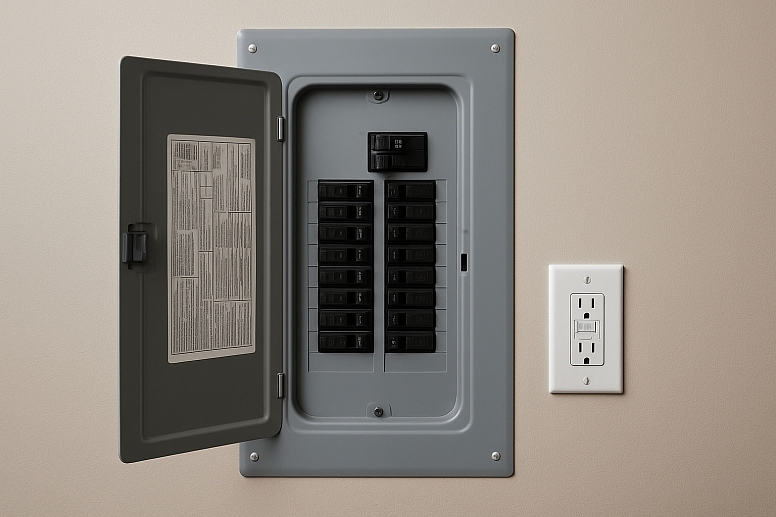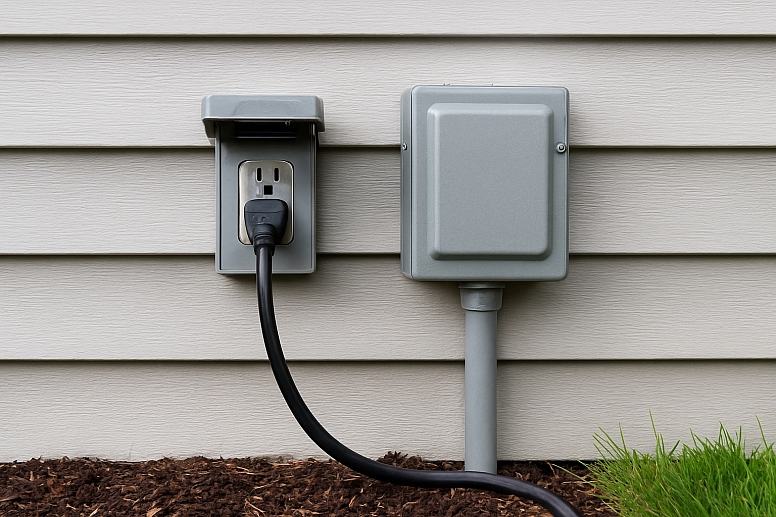
How to Keep Weatherproof Outdoor Electrical Connections Safe
Outdoor electrical connections are exposed to the elements year-round, rain, snow, dust, and extreme heat. Without proper protection, these connections can become safety hazards, lead to power failures, or cause expensive damage. Whether you're setting up outdoor lighting, powering garden tools, or running heavy-duty equipment, keeping your electrical connections safe and weatherproof is a must.
We’ll cover practical tips to cover your outdoor electrical panels and keep them running safely in any condition.
Why Protecting Outdoor Electrical Connections is Important
Outdoor electrical setups are constantly exposed to moisture, dust, and temperature changes. If you don’t cover your electric panels and do not properly protect them, they can become a major risk to both property and personal safety.
- Prevent Electrical Hazards
Water and electricity don’t mix; exposed or poorly sealed connections can lead to short circuits, shocks, or even fires. Proper protection helps reduce the risk of electrical accidents, especially during storms or wet conditions.
- Extend Longevity
Outdoor electrical components are built to last, but constant exposure to harsh weather can wear them down over time. Protecting connections with proper covers and enclosures helps prevent rust, corrosion, and damage, extending the life of your equipment and reducing the need for early replacements.
- Ensure Compliance
Electrical codes and safety regulations often require that outdoor connections be weatherproof and properly enclosed. Following these standards not only keeps your setup safe but also helps avoid penalties or issues during inspections, especially for commercial or rental properties.
- Maintain Performance
Moisture, dirt, and temperature shifts can interfere with how electrical systems function. By keeping outdoor connections protected, you help ensure steady, reliable performance, whether it’s powering lights, tools, or essential equipment.
Common Risks to Outdoor Electrical Connections
Outdoor electrical systems face several environmental challenges that can compromise safety and performance. Knowing these risks can help you take the right steps to prevent damage.
- Weather Exposure
Rain, snow, and extreme temperatures can wear down insulation and corrode metal parts. This exposure increases the risk of short circuits and electrical failure if the connections aren't sealed properly.
- Pests
Rodents, insects, and other pests can chew through wires or nest inside electrical boxes. This not only damages your equipment but also creates fire hazards and connectivity issues.
- UV Damage
Direct sunlight can break down plastic coverings and cable sheathing over time. UV exposure causes materials to become brittle and crack, leaving connections vulnerable to moisture and wear.
- Water Accumulation
Standing water around outlets or junction boxes can seep into connections and cause short circuits or electrocution risks. Without proper drainage or elevation, even light rain can turn into a major hazard.
Tips on How to Protect Outdoor Electrical Connections

Protecting your outdoor electrical connections doesn’t have to be complicated—it just takes the right materials and proper installation. By following a few practical steps, you can ensure your systems stay safe, reliable, and weather-ready all year long.
- Install Weather-Resistant Outdoor Electrical Outlets
Use outdoor-rated outlets that are specifically designed to handle exposure to rain, humidity, and dust. Look for GFCI (Ground Fault Circuit Interrupter) outlets with weather-resistant covers, such as bubble or “in-use” covers that protect even when cords are plugged in. These outlets meet safety codes and significantly reduce the risk of shock or corrosion in wet environments.
- Install GFCI Outlets
Ground Fault Circuit Interrupter (GFCI) outlets are a must for outdoor electrical safety. They automatically cut off power when they detect a ground fault, reducing the risk of electric shock. These outlets are required by code for most outdoor installations. If you're comfortable with basic electrical work, you can even install a GFCI outlet yourself by following step-by-step instructions.
- Use Protective Covers and Enclosures for Outdoor Equipment
Protective covers and enclosures act as the first line of defense against water, dirt, and debris. Use weatherproof outlet covers, junction boxes, or NEMA-rated enclosures designed for outdoor use to fully seal electrical components. These not only prevent accidental contact but also keep the connections safe during heavy rain, wind, or snow, ensuring long-term durability and safety.
- Protect Cables and Wires
Exposed wires can easily get damaged by moisture, pests, or physical wear, increasing the risk of shorts and power loss. Using electrical conduits helps shield cables from harsh outdoor conditions while keeping the setup neat and secure. For long-lasting protection, choose durable conduit and fittings designed specifically for outdoor use.
- Regular Maintenance and Inspections
Over time, outdoor electrical components can loosen, wear out, or become exposed due to weather or shifting ground. Regularly inspecting outlets, covers, and wiring helps catch issues early, before they become safety hazards. Look for signs of rust, cracks, or moisture buildup, and make repairs or replacements as needed to keep everything functioning safely.
- Ensure Proper Drainage Around Electrical Equipment
Standing water around electrical boxes or outlets can quickly lead to short circuits and corrosion. Make sure outdoor electrical installations are elevated or placed in well-drained areas to prevent water buildup. Using gravel beds or sloped surfaces can help redirect water away and keep your equipment dry and safe during heavy rain.
- Seal and Insulate Outdoor Wiring and Cables
Proper sealing and insulation are essential to keep moisture, dust, and insects out of your wiring. Use weatherproof electrical tape, caulking, or silicone sealants to close any gaps where wires enter boxes or conduits. Insulating connectors and exposed ends also help prevent short circuits and ensure your system runs reliably in changing weather conditions.
- Turn Off the Power When Not in Use
Leaving outdoor electrical systems powered on when not needed can increase the risk of damage during storms or unexpected moisture exposure. Turning off the power to unused outlets or equipment helps reduce wear and lowers the chance of electrical faults. It’s a simple step that adds an extra layer of safety, especially during bad weather.
Outdoor electrical connections are essential for convenience and functionality, but they come with their own set of risks. By taking simple measures to protect outdoor electric connections, like installing weather-resistant outlets, using protective covers, sealing wiring, and performing regular maintenance, you can keep your systems safe, efficient, and long-lasting.
Whether you're powering a backyard setup or heavy-duty outdoor equipment, a little homework on how to weatherproof your outdoor electrical connections goes a long way in protecting your electrical connections from the elements.










